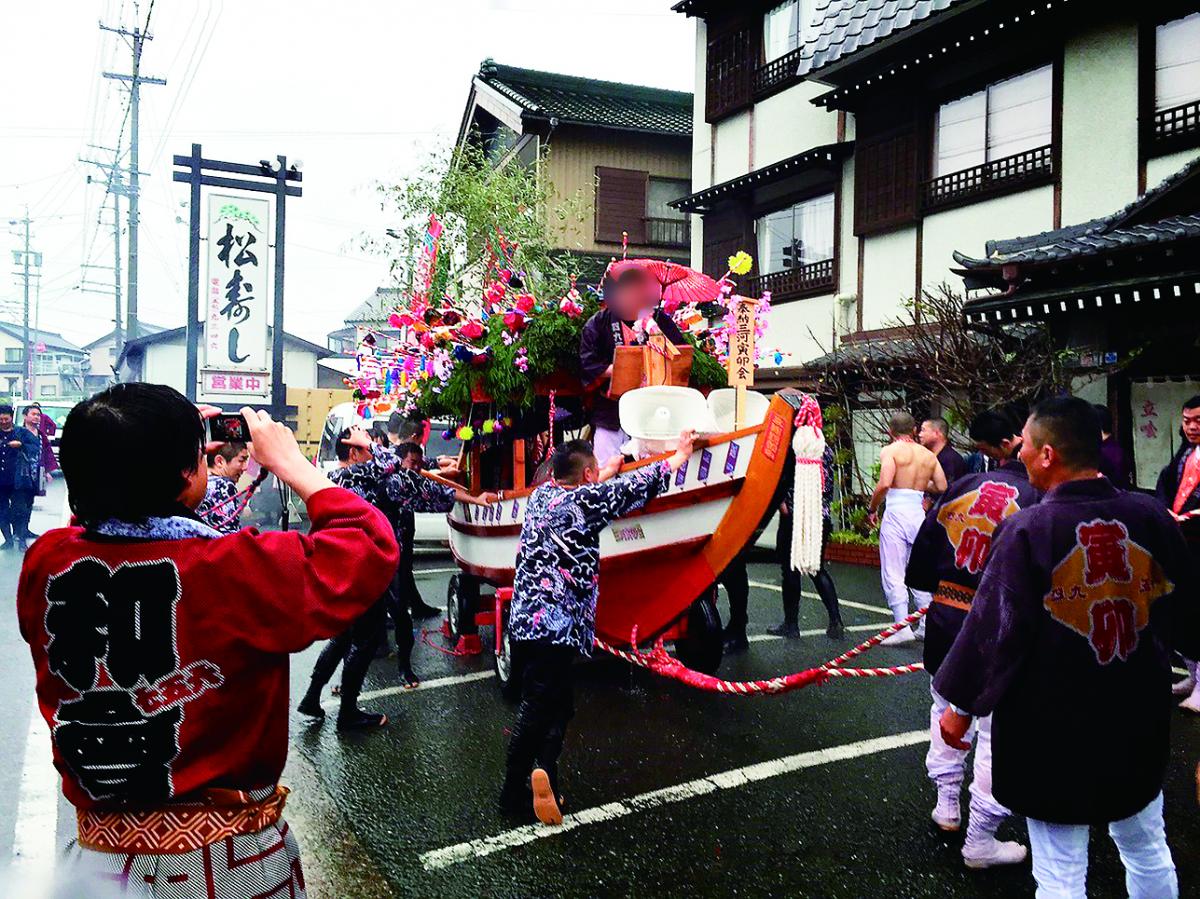- Susanoo-jinja Shrine Autumn Festival
- [Gamagori-City]
- Date : Oct.(The first ten days)
- 【The Susanoo-jinja Shrine Autumn Festival, deeply rooted in local traditions】
(1) About the float parade, a festival event
(Description) Yakatabune (roofed pleasure boat) with wheels parades around the town. Depending on the district, the men run up the steps and pull the floats up to the entrance of the main shrine in one go. (The floats parades around the districts centered around Katahara District 6, and enter the shrine.)
The festival starts with Charaboko-daiko drumming every year on a Saturday evening, followed by amazing hand held fireworks from about 7:30 p.m. The eve festival ends at about 9:00 p.m. The Main Festival on Sunday starts with karaoke, and the pulling of the floats - mainly by men of the so-called "unlucky age" - creates the atmosphere. The festival reaches its climax when rice cakes are thrown.
(Origin) The float parade originates in the Kihiki Shinto ritual of the Ise Jingu Shrine. It is said to have started in around the beginning of the Meiji period, when the fishermen of Katahara-cho prayed for a good catch and for safety out at sea. The fishermen of Katahara-cho go to the Ise Jingu Shrine and Aonomine-jinja Shrine for worship in June every year.
(Transitions) Although the float parade was discontinued in the late 1950s due to a shortage of men to pull the floats, it was revived in the 1980s.
(2) About the festival
It is not known when, where, or how the festival originally started. The shrine's name, Kareki (dead tree), derives from the large sacred camphor tree that has been dead since 220 years ago. This dead tree was blown down by a storm in 1780 during Tenmei era. However, part of its roots survived and remain at the south exit of the shrine today. People use the name "Kareki" for festive events and the shrine parishioners themselves in association with this sacred tree.
(3) <Float structure, etc.> Four wheels are attached to a boat of 5 m in length, 1. 5 m in width, weighing approx. 1 to 5 t, with a roof thatched with green leaves, supported by four pillars at the center. The roof is decorated with fishermen's flags and artificial flowers. The floats, which were originally made of wood, are these days mainly made of aluminum.
Festival Overview
Overview
| Date | Oct.(The first ten days) |
|---|---|
| Venue | Haguri 2, Katahara-cho, Gamagori City |
| Phone number | 080-3758-9008(Katahara 6th District Representative Buntaro Ichikawa) |
| Number of floats | 1 |
Access / Map
Access / Map
| Access by public transport | Approx. 5 minutes' walk from Meitetsu Gamagori Line Katahara Station. (Next to Katahara Junior High School.) |
|---|---|
| Access by car | Approx. 25 minutes by car from Tomei Expressway Otowa-Gamagori Exit. |


